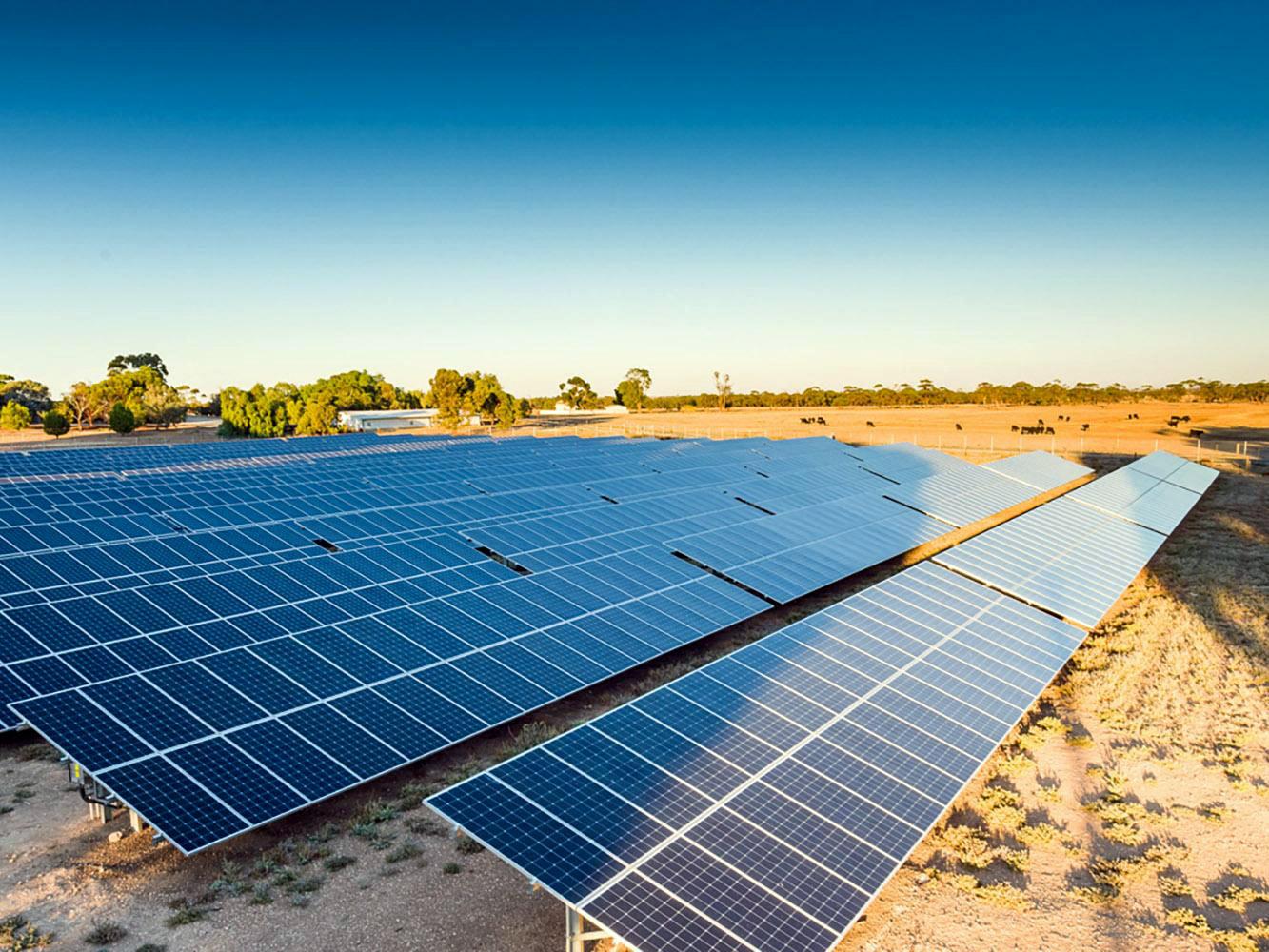Roseworthy solar project powers up

The University of Adelaide and the South Australian Government today celebrate the opening of the $7 million Roseworthy Solar and Energy Storage project, the largest in the University’s history, which is expected to generate an average of 42% of the campus’s energy needs.
The Roseworthy Solar and Energy Storage Project will reduce the University’s peak electricity demand, reduce energy costs and increase the resilience of energy supply to the Roseworthy campus, and is supported by a $778,500 grant received from the South Australian Renewable Technology Fund.
On its first day of full operation in March, the facility managed to offset nearly 90% of the connected campus electrical load.
The project has four main components:
- a solar farm consisting of 3200 solar panels producing 1.2MW of power
- an upgrade of the Roseworthy campus internal power network from a low-voltage to a high-voltage support system
- a hybrid battery storage solution – a combination of Tesla lithium-ion batteries and UniEnergy Technologies (UET) Vanadium flow batteries – with a capacity of 420/1200kWh
- a digital microgrid, which is the operating system between the solar cells and the batteries.
The panels charge the Tesla and UET batteries, and the microgrid controller chooses when to best charge and discharge the batteries.
The project is now fully operational, with the solar panels generating energy and charging the batteries since late April this year.
“We were excited when, on its first full day of operation, the solar farm offset nearly 90% of the Roseworthy campus’s electrical load,” said University of Adelaide Project Manager Rob Newcombe.
“In the simplest of terms this meant powering up the animal hospitals, teaching labs, our lecture theatres and offices, research facilities, all our computers and devices, the dining hall, swimming pool, the lights on the oval, the gym and student housing, all off the back of renewable energy.
“Although this outstanding first day result occurred during mid-semester break, when the campus was quieter than usual, it was still an extraordinary achievement on day one.”
Professor Wayne Hein, Dean of the Roseworthy campus, said: “Another important benefit of the project is the research and learning opportunities that will be available to researchers and students.”
“The project will be a living laboratory, providing our researchers with opportunities for projects in areas including energy management, grid segregation, low-cost fault detection systems, system resilience, and cybersecurity,” Professor Hein said.
“There will also be opportunities for students to learn, with plenty of scope to incorporate different aspects of the facility into University courses and projects for students studying everything from engineering, cybersecurity and space, through to environmental science.”
The completion of the Roseworthy Solar and Energy Storage project was celebrated at an opening event held at the University of Adelaide’s Roseworthy campus. The event was attended by special guests including South Australian Energy Minister the Hon. Dan van Holst Pellekaan.
“The Marshall Government is enabling a modern energy system which will deliver cheaper, more reliable and cleaner electricity for all South Australians,” Minister van Holst Pellekaan said.
“This Solar and Energy Storage Project is one of many supported by the $150m Renewable Technology Fund which is supporting next generation, renewable energy storage projects across the state.
“The Project is another step on the path to reach 100% net renewable energy by 2030, which will help us meet both our energy needs and Australia’s Paris climate emission agreements.”
Bruce Lines, University of Adelaide Chief Operating Officer, said: “This is the largest solar project in the University's history and a key strategy under the Campus Sustainability Plan, which outlines our commitment to decreasing the environmental impact of our operations.
“The research and learning opportunities associated with the project will also filter out to benefit industry and the wider community, including testing the performance and reliability of battery storage technology in hot, dry conditions.”
